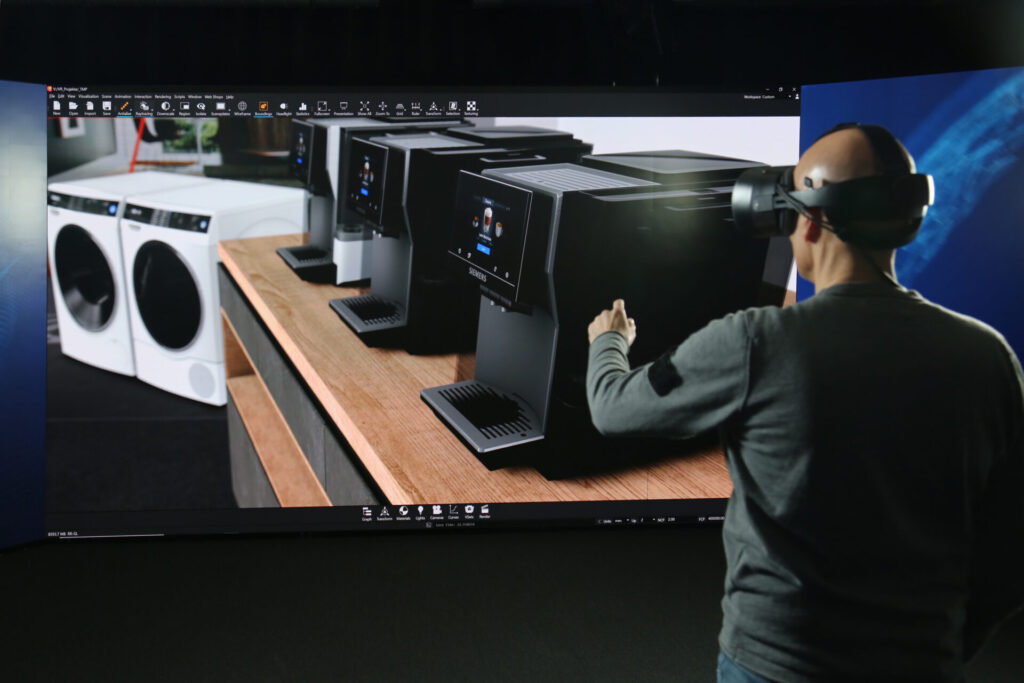Our new Customer Spotlight series aims to introduce a customer – who they are, what they do, why they do it – share a challenge they’ve had, identify how Autodesk was able to provide a solution, and celebrate the outcome that resulted from that solution.
We’re incredibly proud of the work our customers do and of our part in supporting their processes.
The Customer

BSH Hausgeräte GmbH is one of the biggest household appliances manufacturers worldwide. It is #1 in the European market and #5 worldwide (as of 2022). BSH sells the whole range of household appliances, from small domestic appliances (SDA) up to major domestic appliances (MDA) like washing machines.
BSH has 39 factories in Europe, the USA, Latin America, and Asia. Over 63,000 people work for BSH, and their manufacturing process is carbon-neutral.

The BSH portfolio includes

BSH is all about technical innovation. The first electric vacuum cleaners, refrigerators, and modern automatic washing machines were part of the innovations that has made BSH a global brand.

Their goal: to make the lives of people, especially those taking care of domestic life, easier. Modern appliances create time and energy for things other than housework, something more important today than ever before.
The Challenge
BSH customers are a discerning group who are looking for more sophisticated appliances and a wider portfolio of different products.

Like many product companies, BSH faces a reduced time-to-market pipeline and intense market competition. To get ahead of that, they decided they need something to accelerate the design process and save costs.
Essentially, BSH was looking for a product to help them find the right solution earlier in the process and to meet customer needs more precisely.
The Solution
Part of product design is prototyping, and that’s where the process can become costly and time consuming. BSH was looking for software tools that could accelerate the process chain, offering realistic mock-ups before products were given physical form. While physical prototypes are the best representation of a future product, because they are one-to-one in scale and have similar functionality, when they’re made two or three months later, they don’t reflect the reality of a current design.

Enter Autodesk VRED.
In 2008, BSH decided to adopt VRED as its main design visualization tool, providing the best balance between quality and performance. BSH uses VRED for product presentations to design managers and decision makers. “It’s a very, very powerful tool with a lot of different workflows, making quick decisions possible,” says Martin Emila, Head of BSH’s Virtual Reality Studio. BSH saves time in the ideation phase, when a large number of ideas are generated and have to be evaluated and compared.

A company like BSH doesn’t want to make physical models for all of those design iterations, and VRED allows the design team to present the future product in a digital way, capturing the design intent precisely.

The Outcome
BSH has integrated VRED into its design process in three use cases.
- VRED renderings allow BSH to quickly and successfully evaluate product shapes, materials and surfaces (e.g. washing machine or refrigerator) early on. The design team generates renderings for 3-5 design variants, which are then projected on a power wall for a real-time presentation with decision makers. Precise rendering on this scale offer the chance to present a fridge in one-to-one size with an open door and all its equipment.
- The second use case involved deploying VRED to render images or movies of the product in specific situations: a fridge in a kitchen or built into a wall; a washing machine in a laundry room, etc.
- Next and most valuable use case involved using VRED for immersive product presentations with VR headsets. The presentations are high quality and very easy to prepare, and once immersed, the viewer has an immediate reaction to size, volume, proportions, etc.

As with many customers who use VRED for visualization, BSH experienced significant savings in time and cost for early models.
“Using VR tools allows us to visualize appliances at a really early stage so that we can start discussions with all stakeholders in the project.
To illustrate the hard saving potential: a mock-up of a product costs us 5- 6-digit amount and takes longer to build. Beside this quantitative aspect, it is a must-have for product definition to be able to visualize appliances at an early stage and to discuss adaptations live across locations on a virtual model!”
Martin Emila
Digital models allow for more iterations in a shorter time span, moving the product closer to final and physical prototyping without the usual time and expense.
Final Thoughts
BSH appreciates VRED’s ability to consume and process a significant amount of data. It’s become a game-changer for the company, as it manages a lot of data preparation, structuring and configuring in its design process. VRED’s capacity to operate with a large amount of CAD data is unique.
Stay tuned for more customer spotlights, industry stories, and product updates. You can also check out our Autodesk Automotive on LinkedIn, subscribe to our Alias and VRED YouTube channels, and follow us on Facebook.
If you’re not already an Alias or VRED user or would like to expand your skills at home, get started by downloading the Alias & VRED 2024 Learning Editions:
For Alias Learning Edition, click here.
For VRED Learning Edition, click here.